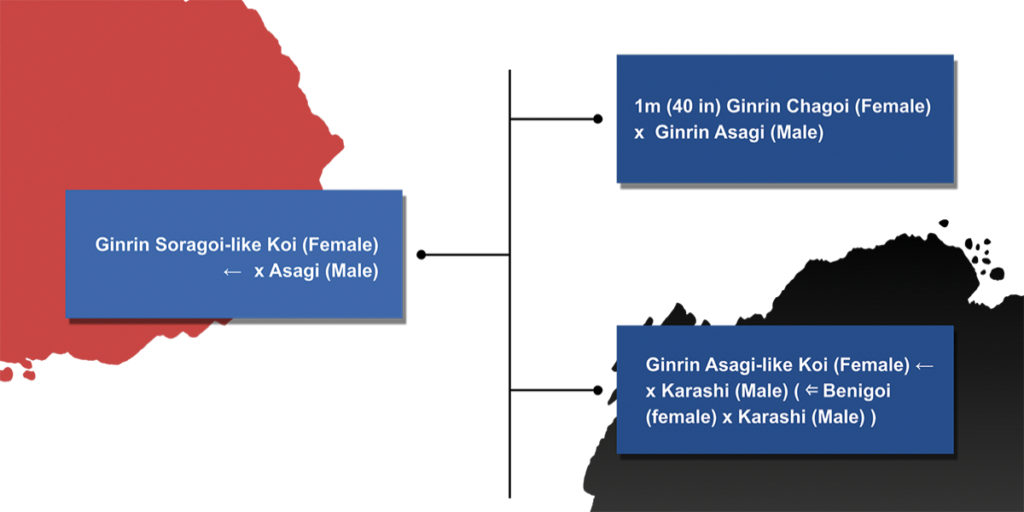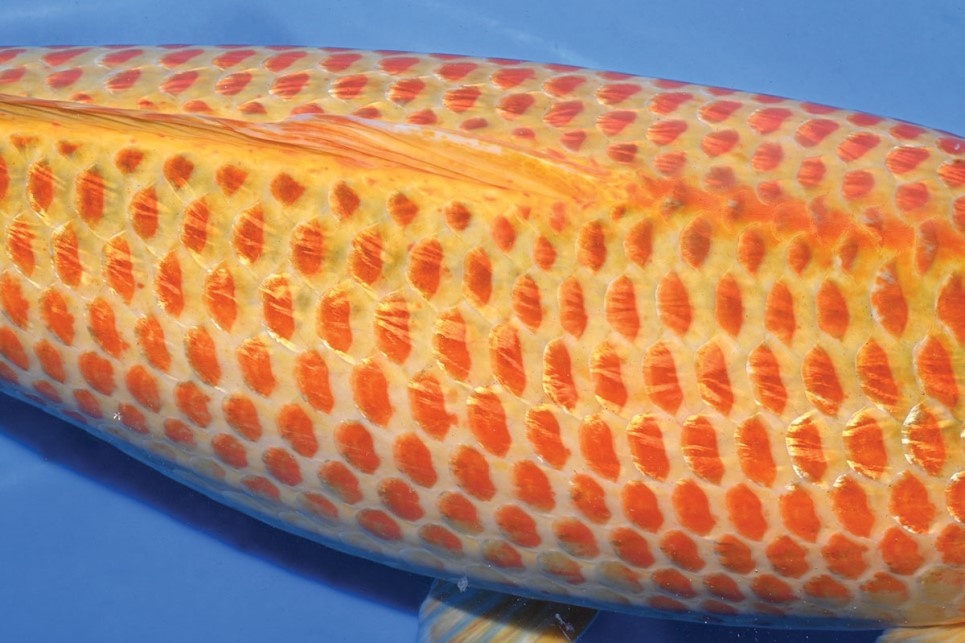
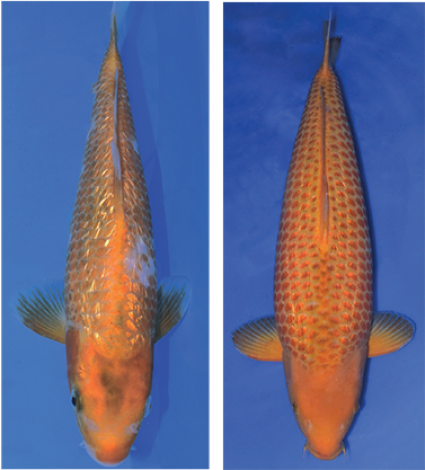
Ever so many years, thanks to breeders’ efforts, we enjoy encountering new varieties. Most of the time, however, they are a metallic, Ginrin or Doitsu version of existing varieties. I believe only few can be called a completely new variety. Golden Corn, which I am going to introduce here, is one of the few new varieties.
It has been about five years since Mr. Taniguchi from Taniguchi Koi Farm first introduced Golden Corn to the industry. Many of you might have heard the name, but you probably are not sure what it is.
Golden Corn is a very hard variety to define because it can develop into so many different variations. (You will see what I mean when you look at the examples in this article.) Some may look like Ginrin Kanoko Karashi or even Asagi. One strong characteristic of this variety is that koi develop a Kanoko (polka dots) pattern as they grow big and mature.
In 2021, I interviewed Taniguchi from Taniguchi Koi Farm. I would like to share what I learned about this variety.
Origin of Golden Corn
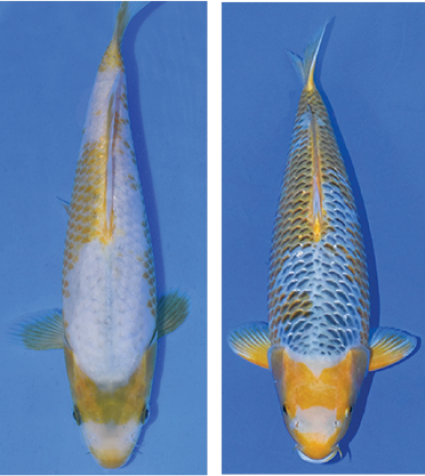
Taniguchi had worked on the Golden Corn variety since 2005, and he stabilized it in 2017. This means he had a solid pair of koi parents that could constantly produce the variety.
He wondered how he could reproduce this interesting Kanoko pattern on koi.
This koi was bred from a pair of female Chagoi and male Ginrin Asagi. The Chagoi was more than 40 inches long. Taniguchi loves Ginrin varieties, so at first, he wanted to breed koi with Ginrin. From the pair, one interesting koi was born. She looked like Ginrin Soragoi or Ginrin Asagi that had an interesting Kanoko pattern.
She became the inspiration. Taniguchi envisioned creating beautiful koi with Kanoko patterns. He crossed her with a male Asagi. From the pair, he got Ginrin Asagi. What was different from regular Asagi was the beni at the bottom. There were a lot of small Kanoko that appeared to come up to the top. He crossed her with a male Karashi.
But this was no ordinary Karashi. Karashi was born from a pair of female Benigoi and male Karashi. Because he had the stronger blood of Benigoi, its offspring tend to develop many red dots. As koi, these red spots ruin the beauty of the yellow body of Karashi. They were not even sellable.
However, he wondered if that feature might help realize his vision — koi with beautiful Kanoko. His intuition was right. That was the last piece of the puzzle to develop Golden Corn.
Surprising Features
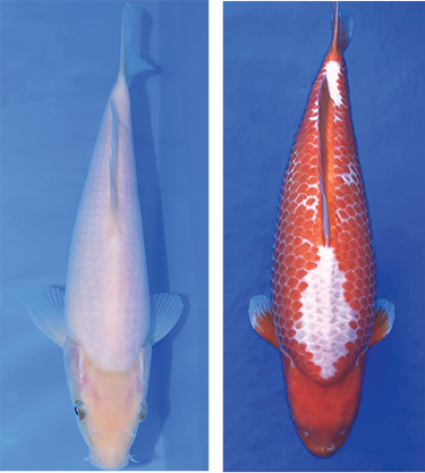
Because they have the blood of Chagoi and Karashi, Golden Corn koi have the DNA to grow big. You can feed them as much as you want and enjoy the jumbo growth.
Another feature is the drastic change of pattern. Kanoko patterns usually emerge as koi mature. Some koi may not even be recognizable from how they looked when they were babies. So even if they look boring or you think they have no future, you should hold on to them. “You will be surprised,” Taniguchi insists.
I do not know if this is what he expected when he started his journey 17 years ago. Maybe it was like walking in the dark, but he certainly created such an amazing variety.
Remembering that all koi started from food carp, what a challenging and time-consuming path our senior breeders in Japan have taken! When you consider all their accomplishments, they have now created more than 100 different varieties in koi. I respect Taniguchi with the challenge and the accomplishment. Moreover, I would like to thank all the breeders in the past and present for working so hard to create these living jewels for our enjoyment.
They are many more versions of Golden Corn than what you see in this article. If you would like to get Golden Corn from the Taniguchi Koi Farm, please contact a koi dealer who imports Japanese koi. Golden Corn koi may look ugly when you receive them, but as you can see above, you should do not give up. Take care of them for at least three years in your pond. Good luck!
Taro Kadoma is
